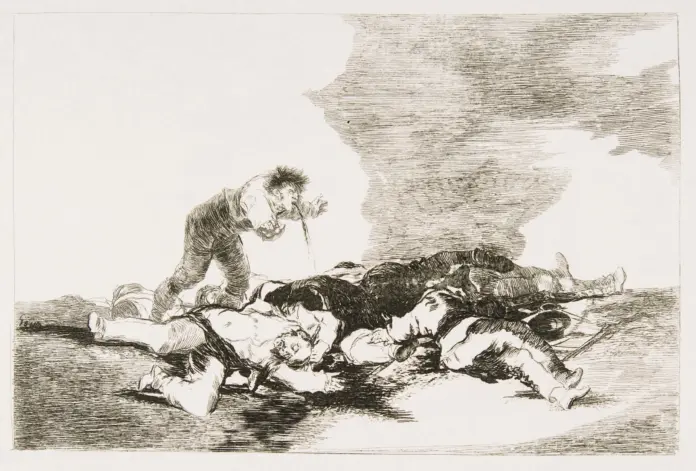
Article Excerpt:
War is the worst evil that people have inflicted upon one another, at costs to themselves, since some hominid discovered the lethal efficacy of rocks. It is waged continually somewhere or other in every generation, furiously now, in Ukraine, and fitfully in the Middle East and Africa. The recurring horror has paused on a global scale—holding its breath, you may feel—only because, post-Hiroshima, nuclear weaponry bodes suicide for the next power to use it. Or so we have thought, and perhaps still think, but with shaken complacency. What never ends is the primordial emotional tug toward organized mayhem, which is playing out, yet again, in Eastern Europe in the face of widespread revulsion. Putin: Monster! But a madman? Diagnosing him as such assumes that sanity is the normative state of people with power.
Goya’s penultimate “Disaster” depicts a glowing female figure supine, and apparently lifeless, amid a mob of standing monsters. The caption reads, “Truth has died.” The following, final image, “Will she rise again?,” repeats the same composition. The woman’s posture and hopeless situation are unchanged. Only, in this one, she has opened her eyes. ♦
Analysis:
This reflection on a collection of past works from Edouard Manet and Francisco Goya emphasizes a direct connection between the acts of war and the works of art being produced. Through these works, we are able to understand a side of this history that textbooks never seem to cover– the human emotion. Reflecting upon these works allows us to understand the humanity of war. Drawings, paintings, and photographs alike, we are able to face the essence of war through a humanistic perspective, and not simply through desensitized facts. It is very interesting to see and compare the timelines of different artistic styles to times of war– it seem the two are directly influenced by each other.



